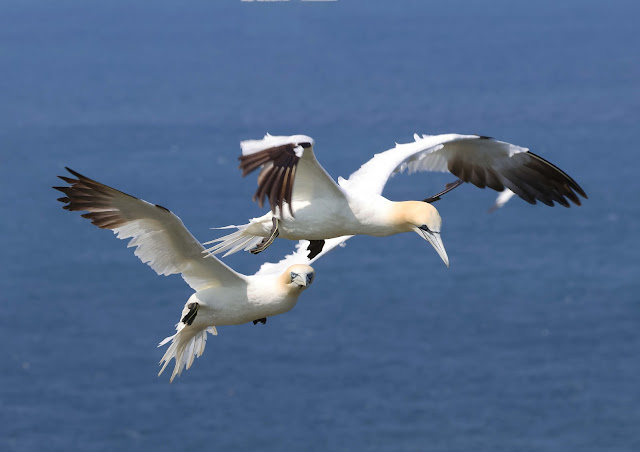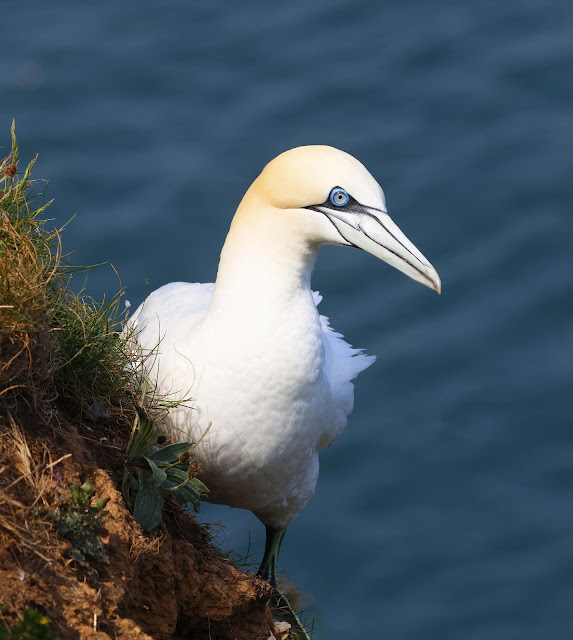Approximately half a million seabirds come to the cliffs to breed, the largest in size being the Northern Gannets of which there were almost 12,500 pairs in 2015 but maybe less now due to the avian flu epidemic of two years ago. Given the right conditions with onshore winds the Gannets can come very close to the RSPB's specially constructed clifftop viewpoints which allow unforgettable views. One can stand for hours just watching the continuous activity of the Gannets circling around and coming close in to inspect the cliffs and it can seem that they are also inspecting the many human visitors standing on the viewpoints gawping at their majestic presence just metres away.
Gannets are impressive birds, bulky with an almost six foot wing span and infinitely graceful as they fly with supreme mastery on the wind. although they struggle to retain that quality when on land. Today many were coming to the cliff to tear at the thick clifftop grass which they carry away to construct their nests on ledges on the cliff face.
The physical activity is not the only thing that is constant as the birds keep up a continuous pulsing growling sound that is almost soothing and which probably relates to its rhythmic quality.
The always popular viewpoints can get very crowded even in mid week and at times it is impossible to get a position in which to be able to photo the seabirds especially the Gannets but with patience a space will eventually become available on the railing and you dive in to secure it.
 |
| Staple Newk Viewpoint probably the best of the several viewpoints from which to observe the Gannets |
Below are some images of the Gannets that I managed to take from Staple Newk Viewpoint last Wednesday.
 |
| Some of the Gannets checking out the clifftop and their fellow Gannets stood in the grass below and maybe also checking out us, stood on the viewpoint watching and admiring them |

 |
| Two Gannets demonstrating their innate flying skills in the wind |












No comments:
Post a Comment